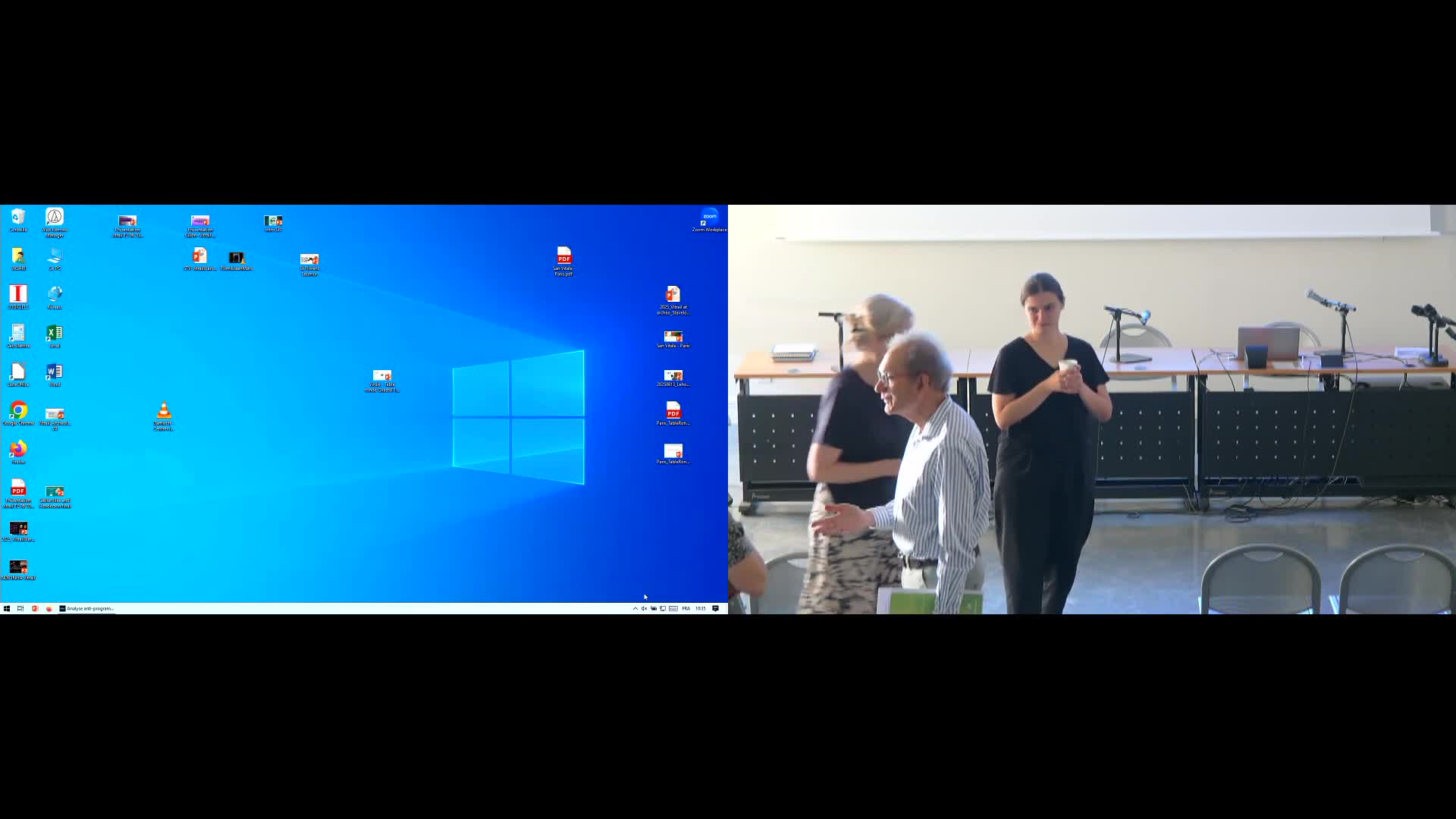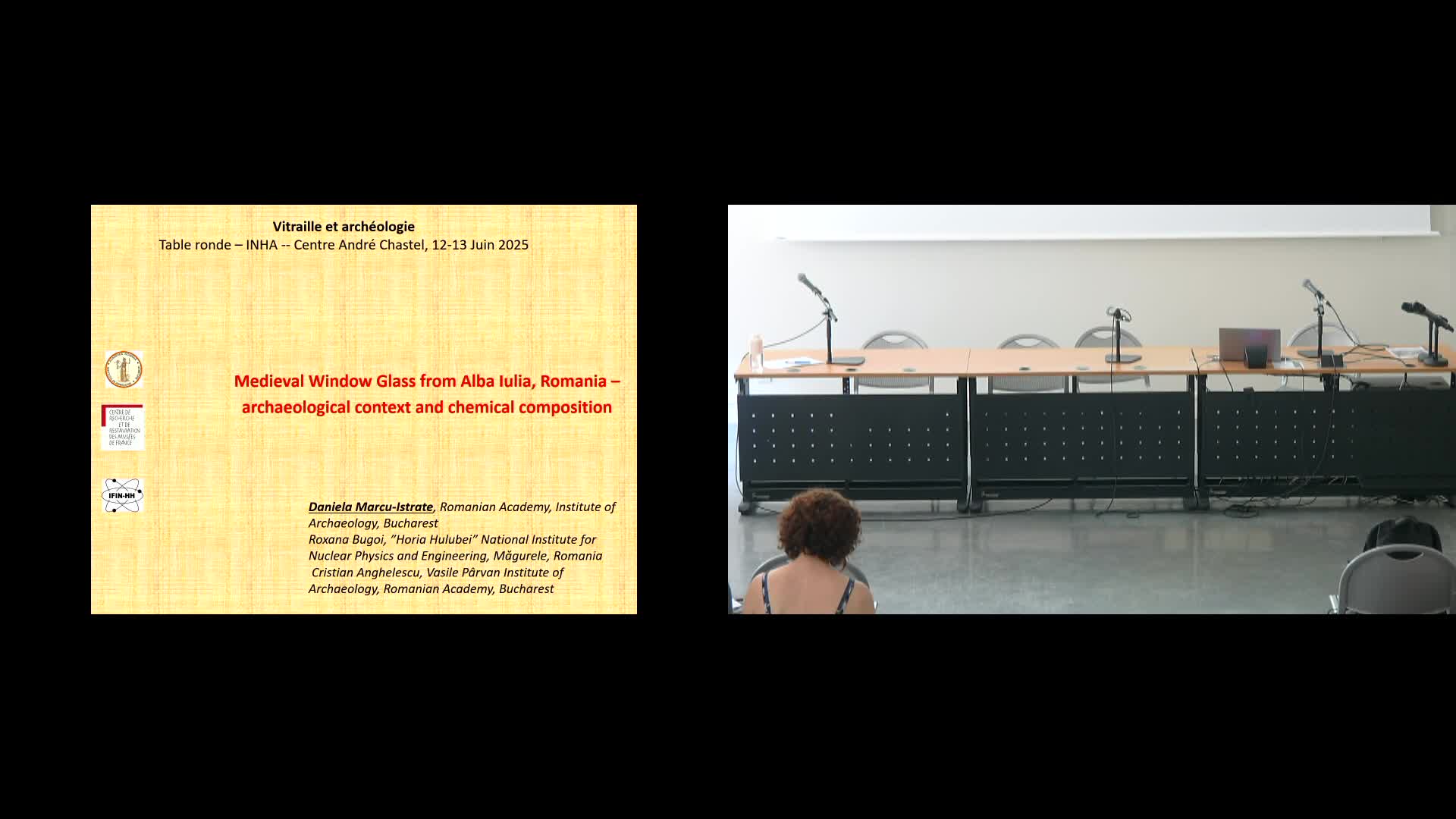Notice
Fragmented Images At the Origins of Stained-Glass in Western Europe (5th-9th c.)
- document 1 document 2 document 3
- niveau 1 niveau 2 niveau 3
Descriptif
Regard croisé présenté par Alberto Virdis (Centre for Early Medieval Studies, Brno ) invité par Sylvie Balcon-Berry et Jean-François Luneau (membres du Centre André-Chastel)
From archaeological and literary study, the origins of stained-glass art can be placed at a hitherto unspecified time between the Late Antiquity and the Early Middle Ages. However, the absence of early medieval stained-glass windows in situ has recently been offset by a more significant number of archaeological finds of stained-glass fragments dating, for the most part, to the period ranging from the sixth century to the ninth century CE. Precursors have often been identified in glass opus sectile compositions, imitating the marble sectilia widely seen in the Roman world. As an emerging medium, however, stained glass apparently surpassed its models. The new medium had to come up with a new aesthetic, one rooted in anti-classical traditions and expressed in artistic media such as glass and enamels cloisonné jewelry-making, that enhanced light and colors and pointed towards an image made of fragmented parts.
In this talk, I will explore the origins of the art of stained glass, between the late Roman and Carolingian period, from a material and aesthetic perspective, by presenting and discussing the data collected in the first phases of a research project that the principal author is currently leading.
Connections between stained glass and cloisonné jewelry will be investigated, as well as the functions and materiality of late antique and early medieval windows, crucial for contextualizing the archaeological window glass findings with the space to which they once belonged. Finally, I will introduce the critical issue of the late antique aesthetics of fragmentation, to which the earliest stained-glass windows refer, and the interactions between the early medieval aesthetics and classical/anti-classical traditions, emerging in the literary production of late Roman and Merovingian Gaul, as well as in other contemporary artworks.
Intervention / Responsable scientifique
Thème
Sur le même thème
-
Vitrail et archéologie. Colloque international. Session 3
Balcon-BerrySylvieCe colloque international, Vitrail et archéologie s'est tenu les 12 et 13 juin 2025 à l'Institut d'histoire de l'Art (INHA), galerie Colbert. Il a été organisé par Sylvie BALCON-BERRY (Centre André
-
Vitrail et archéologie. Colloque international. Session 4
Balcon-BerrySylvieCe colloque international, Vitrail et archéologie s'est tenu les 12 et 13 juin 2025 à l'Institut d'histoire de l'Art (INHA), galerie Colbert. Il a été organisé par Sylvie BALCON-BERRY (Centre André



